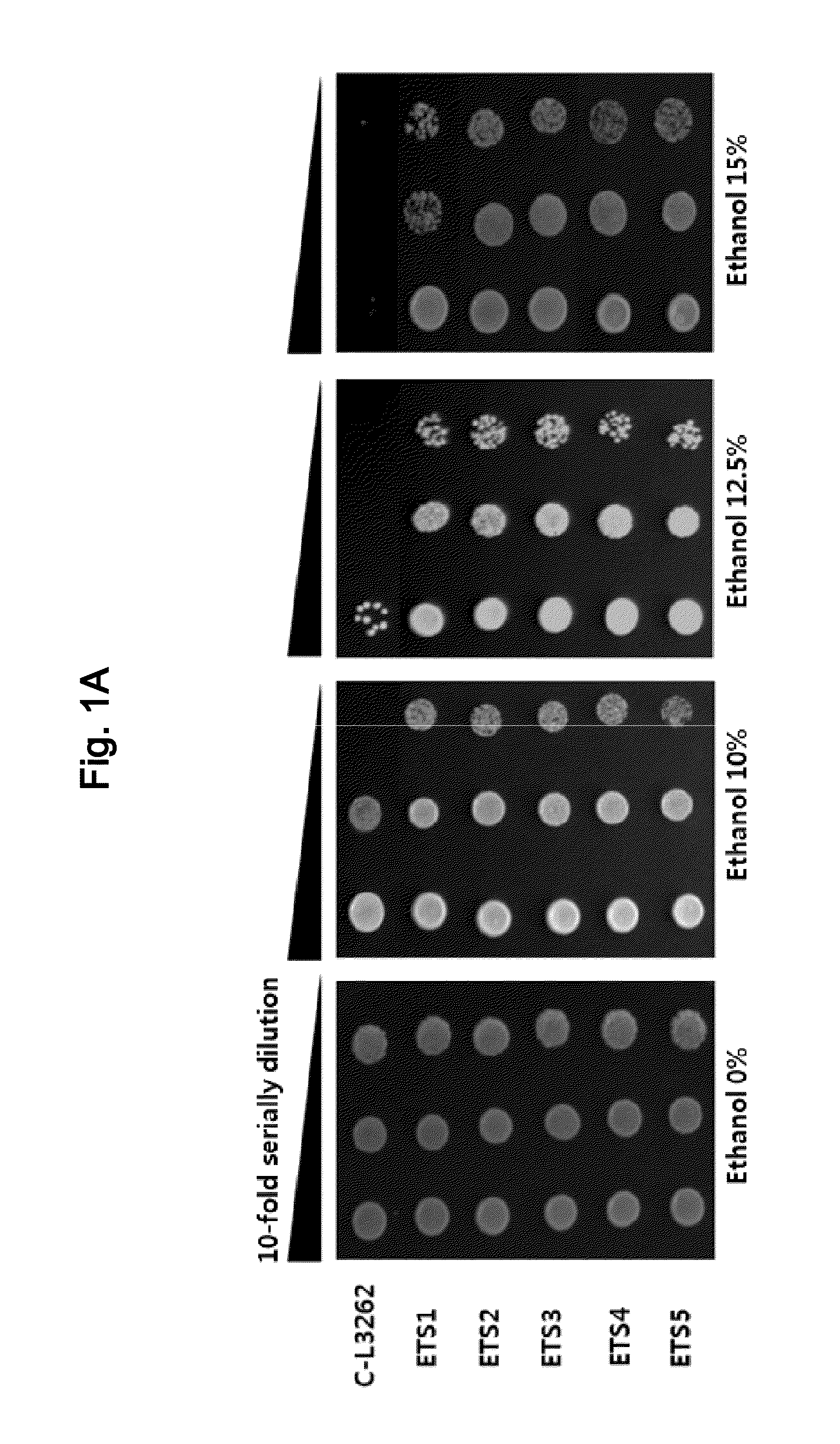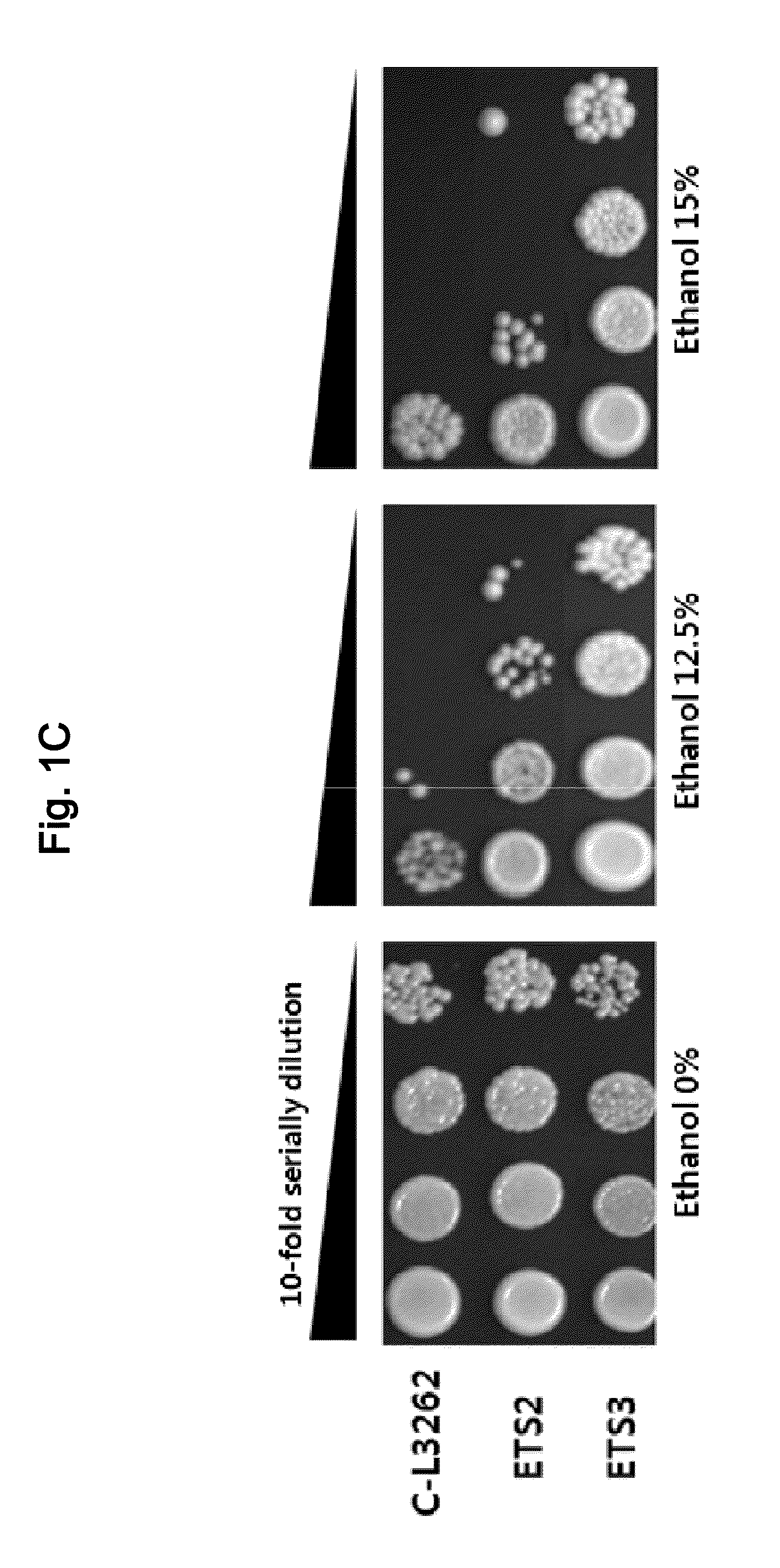Ethanol-Resistant Yeast Gene, and Use Thereof
a technology of ethanol tolerance and yeast, which is applied in the field of ethanol-tolerant yeast strains, can solve the problems of poor ethanol production, inconsistent previous reports in view of ethanol tolerance, and relative high production cost of bioethanol,
- Summary
- Abstract
- Description
- Claims
- Application Information
AI Technical Summary
Benefits of technology
Problems solved by technology
Method used
Image
Examples
examples
Materials and Methods
Yeast Strains and Growth Conditions
[0087]S. cerevisiae L3262 (MAT-α; ura3-52 leu2-3,112 his4-34; KRIBB, Dae-jeon, Republic of Korea) and BY4741 (MATa his3Δ1 leu2Δ0 met15Δ0 ura3Δ0) were used as transformation recipients. The non-essential haploid S. cerevisiae deletion library was kindly obtained from Dr. Wonkee Hur (Seoul National University, Seoul, Korea) for the verification of identified genes. Unless otherwise mentioned, yeast cells were grown at 30° C. in YPD (1% Bacto yeast extract, 2% Bacto peptone, and 2 w / v % glucose and 15% bacto-agar for solid plates; Difco, MI) for non-selective propagation or yeast synthetic complete (YSCD) medium (0.67% yeast nitrogen base without amino acids, amino acid supplement mixture, 2% dextrose, and 1.5% noble agar for solid plates; MP, OH) for selective propagation. To construct a plasmid, pRS316 (CE-based vector; Sc GAPDH promoter, URA3 selection marker; Ewha University, Seoul, Republic of Korea) was used as an expression...
PUM
| Property | Measurement | Unit |
|---|---|---|
| optical density | aaaaa | aaaaa |
| optical density | aaaaa | aaaaa |
| v/v | aaaaa | aaaaa |
Abstract
Description
Claims
Application Information
 Login to View More
Login to View More - R&D
- Intellectual Property
- Life Sciences
- Materials
- Tech Scout
- Unparalleled Data Quality
- Higher Quality Content
- 60% Fewer Hallucinations
Browse by: Latest US Patents, China's latest patents, Technical Efficacy Thesaurus, Application Domain, Technology Topic, Popular Technical Reports.
© 2025 PatSnap. All rights reserved.Legal|Privacy policy|Modern Slavery Act Transparency Statement|Sitemap|About US| Contact US: help@patsnap.com



